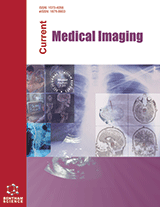Abstract
Background: The brain is the most complex organ of the human body with millions of connections and activations. The electromagnetic signals are generated inside the brain due to a mental or physical task performed. These signals excite a bunch of neurons within a particular lobe depending upon the nature of the task performed. To localize this activity, certain machine learning (ML) techniques in conjunction with a neuroimaging technique (M/EEG, fMRI, PET) are developed. Different ML techniques are provided in the literature for brain source localization. Among them, the most common are: minimum norm estimation (MNE), low resolution brain electromagnetic tomography (LORETA) and Bayesian framework based multiple sparse priors (MSP).
Aims: In this research work, EEG is used as a neuroimaging technique.
Methods: EEG data is synthetically generated at SNR=5dB. Afterwards, ML techniques are applied to estimate the active sources. Each dataset is run for multiple trials (>40). The performance is analyzed using free energy and localization error as performance indicators. Furthermore, MSP is applied with a variant number of patches to observe the impact of patches on source localization.
Results: It is observed that with an increased number of patches, the sources are localized with more precision and accuracy as expressed in terms of free energy and localization error, respectively.
Conclusion: The patches optimization within the Bayesian Framework produces improved results in terms of free energy and localization error.
Keywords: Electroencephalography, machine learning, source localization, multiple sparse priors, free energy, localization error.
[http://dx.doi.org/10.1109/79.962275]
[http://dx.doi.org/10.1007/s13246-014-0308-3] [PMID: 25359588]
[http://dx.doi.org/10.1109/ICCSCE.2013.6719953]
[http://dx.doi.org/10.1016/j.clinph.2004.06.001] [PMID: 15351361]
[http://dx.doi.org/10.1016/j.bspc.2014.01.009]
[http://dx.doi.org/10.1103/RevModPhys.65.413]
[PMID: 12575463]
[http://dx.doi.org/10.1109/78.740118]
[http://dx.doi.org/10.1109/10.725331] [PMID: 9805833]
[http://dx.doi.org/10.1016/j.neuroimage.2013.09.002] [PMID: 24041874]
[http://dx.doi.org/10.1016/j.neuroimage.2007.09.048] [PMID: 17997111]
[http://dx.doi.org/10.1007/BF01436075]
[http://dx.doi.org/10.1016/S0925-4927(99)00013-X] [PMID: 10466736]
[http://dx.doi.org/10.1007/978-94-009-1740-8]
[http://dx.doi.org/10.1016/j.neuroimage.2007.07.032] [PMID: 17869542]
[http://dx.doi.org/10.1016/j.neuroimage.2006.08.035] [PMID: 17055746]
[http://dx.doi.org/10.1109/TBME.2011.2107740] [PMID: 21257364]
[http://dx.doi.org/10.1109/TMAG.2010.2072909]















